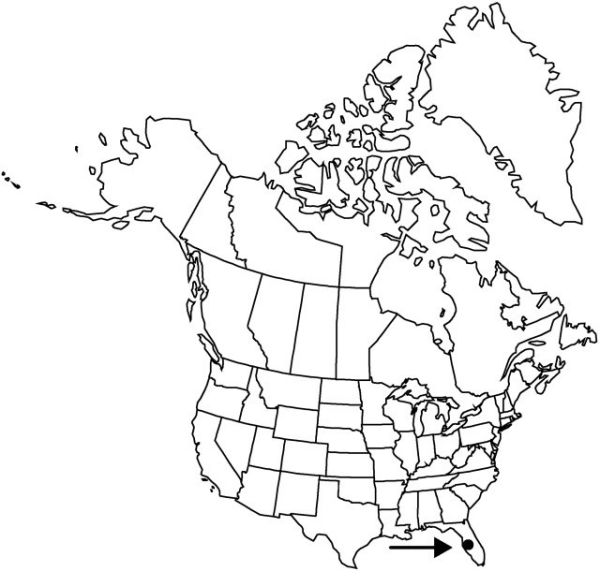Agave neglecta
Fl. S.E. U.S., 289. 1903.
Plants short-stemmed, commonly suckering, without rhizomes, trunks 0.3–0.4 m; rosettes not cespitose, 13–15 × 15–20 dm. Leaves ascending to arching or reflexed, 100–150 × 15–25 cm; blade light green, probably not cross-zoned, broadly lanceolate, firm, adaxially plane, abaxially slightly convex; margins nearly straight, not fibrous, minutely armed near base, teeth single prickles, 1–2 mm, 2–3+ cm apart; apical spine dark brown, acicular, 2.5 cm. Scape 8–10(–13) m. Inflorescences paniculate, open, often bulbiferous; bracts persistent, triangular, 0.5–2 cm; lateral branches 12–20, slightly ascending, comprising distal 1/3–1/2 of inflorescence, longer than 10 cm. Flowers 12–22 per cluster, erect, 5.5–6 cm; perianth greenish yellow, tube urceolate, 8–10 × 4–7 mm, limb lobes erect, equal, 20–30 mm; stamens long-exserted; filaments inserted ca. mid perianth tube or above, erect, yellow, 4–5 cm; anthers yellow, 20–25 mm; ovary 2–3 cm, neck slightly constricted. Capsules oblong to ovoid, 3 cm. Seeds 5–6 mm.
Phenology: Flowering early summer.
Habitat: Sandy places near beaches
Elevation: 0 m
Discussion
Of conservation concern.
Agave neglecta continues to live up to its name, being known only from a series of photographs and incomplete, sterile herbarium specimens. Therefore, the above measurements are only an approximation, and all are subject to modification if and when fresh, reproductive material can be studied. Attempts to see this rare species in the field have been thwarted by development and hurricanes. H. S. Gentry (1982) suggested that it might be related to A. weberi, a freely suckering species that produces fiber of an excellent quality. Nothing is known about the uses of A. neglecta. The plant may well be a cultivar of A. sisalana or A. kewensis and represent an ancient introduction from Mexico.
Selected References
None.
